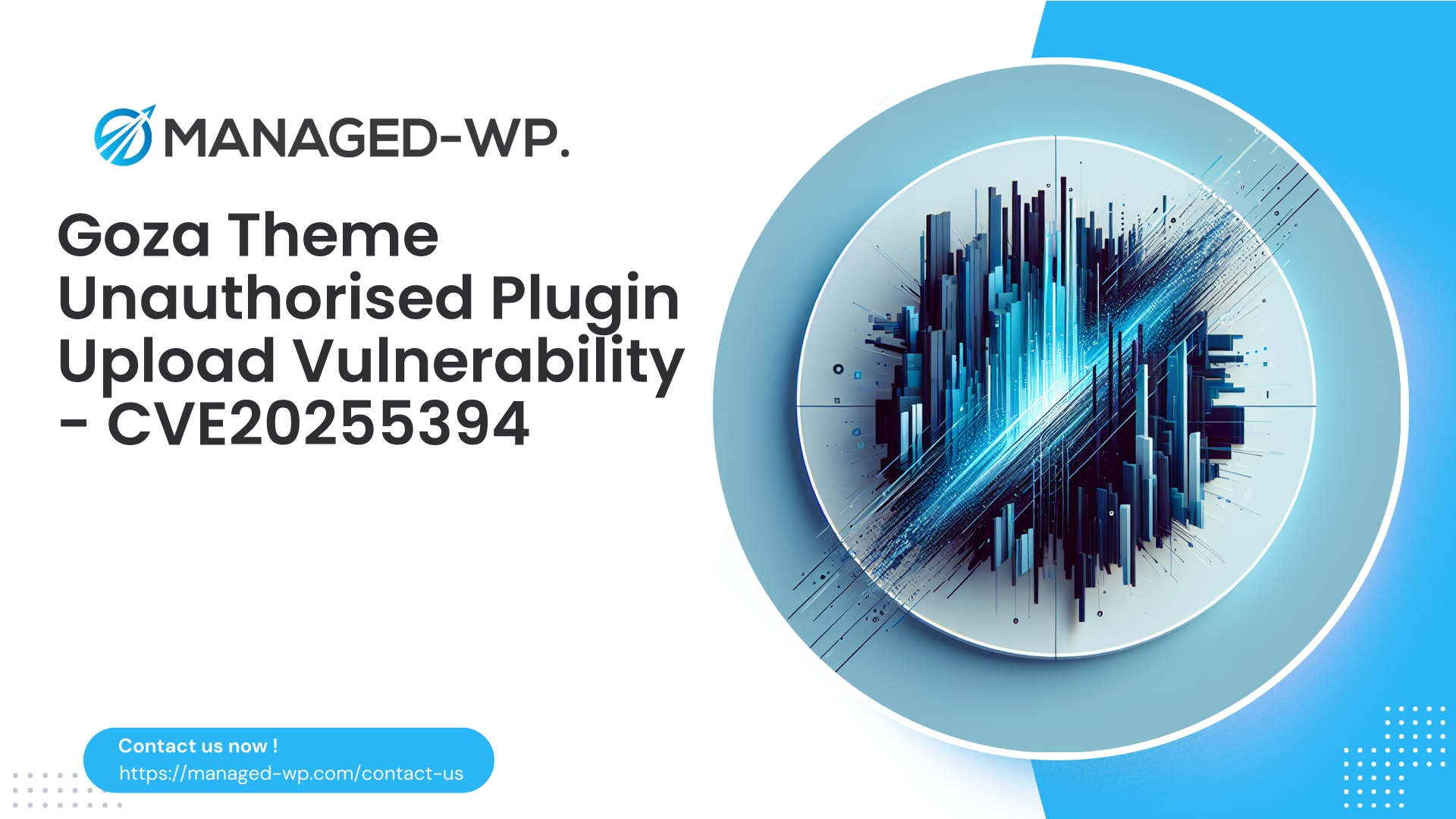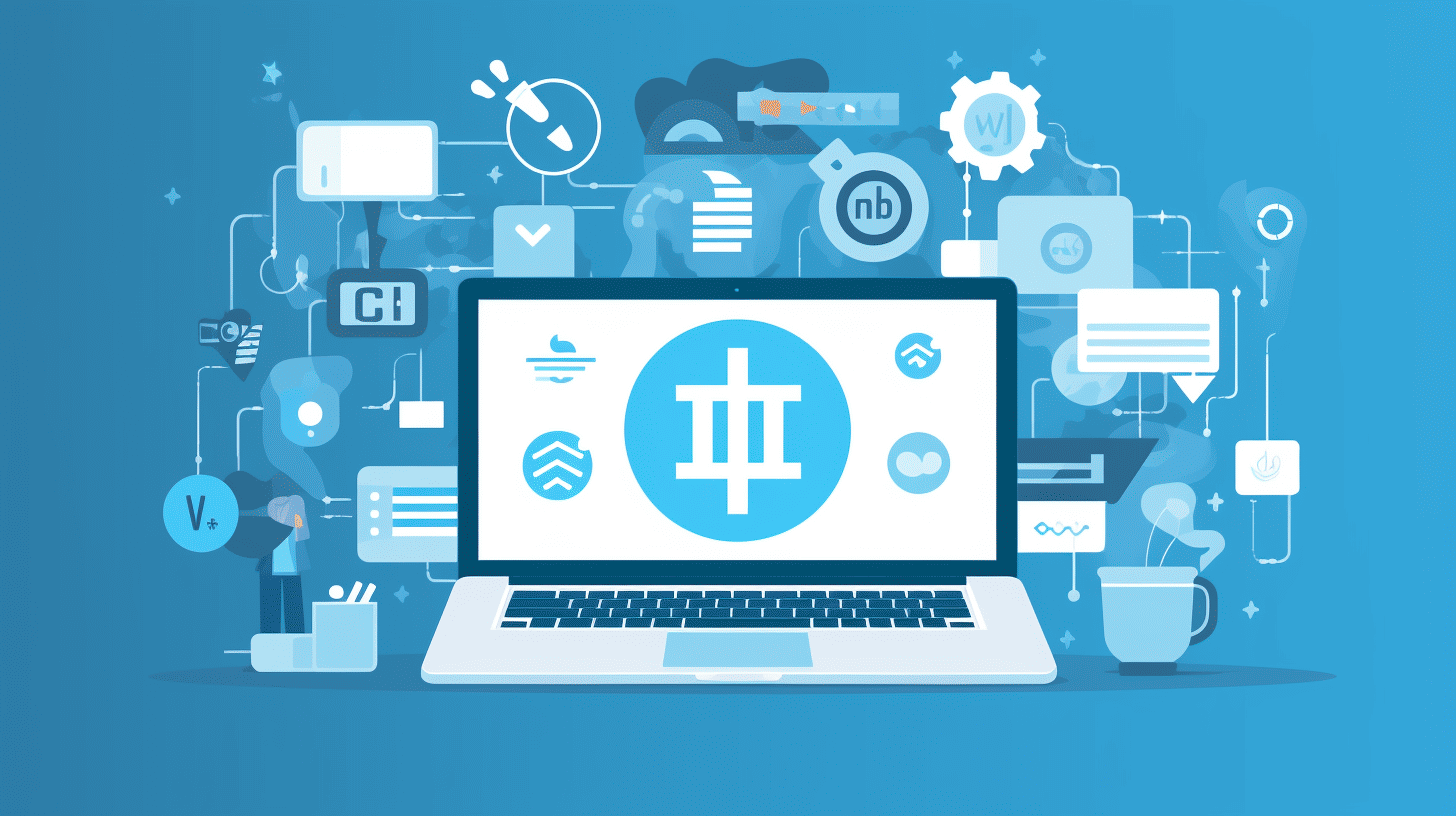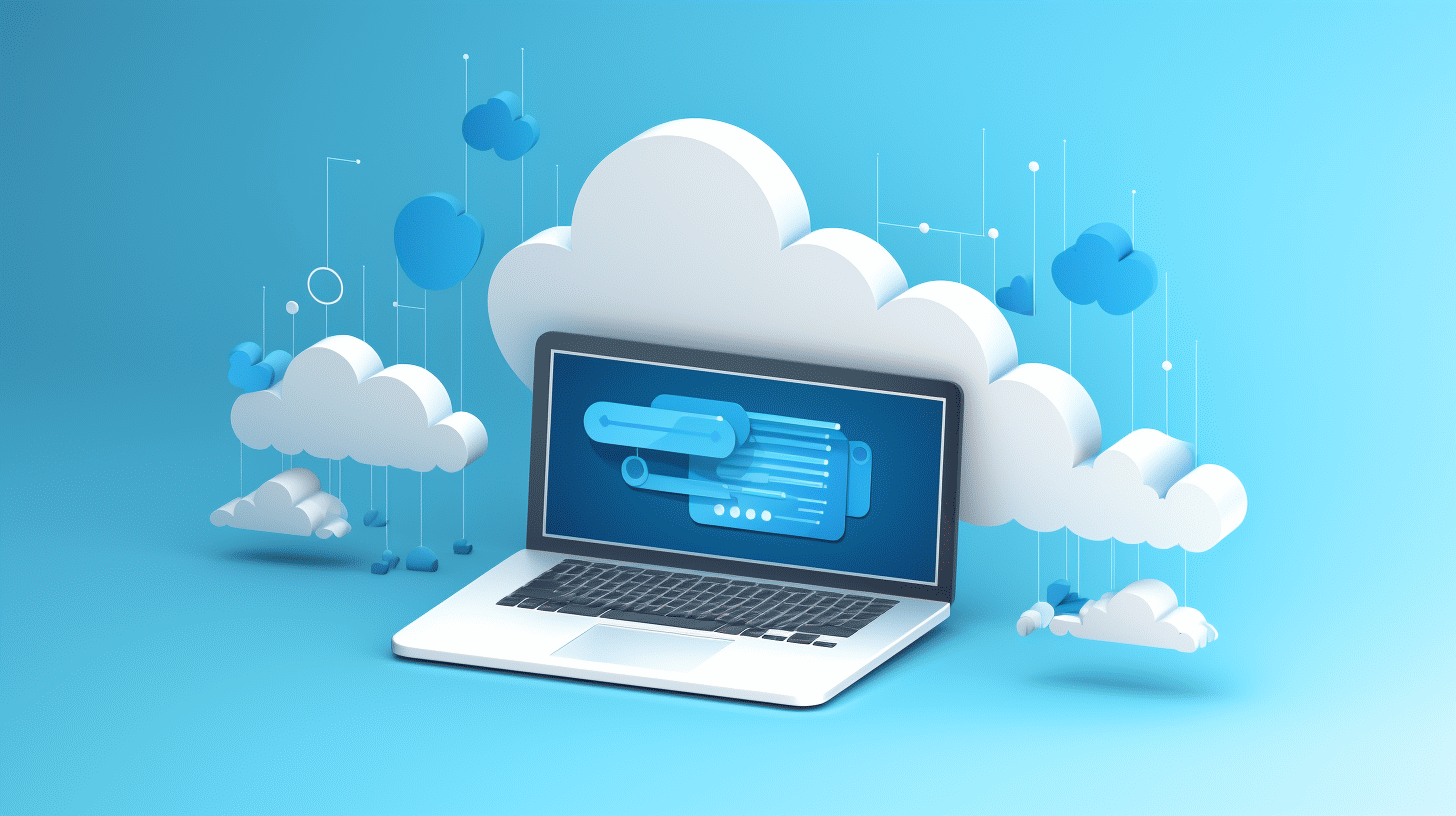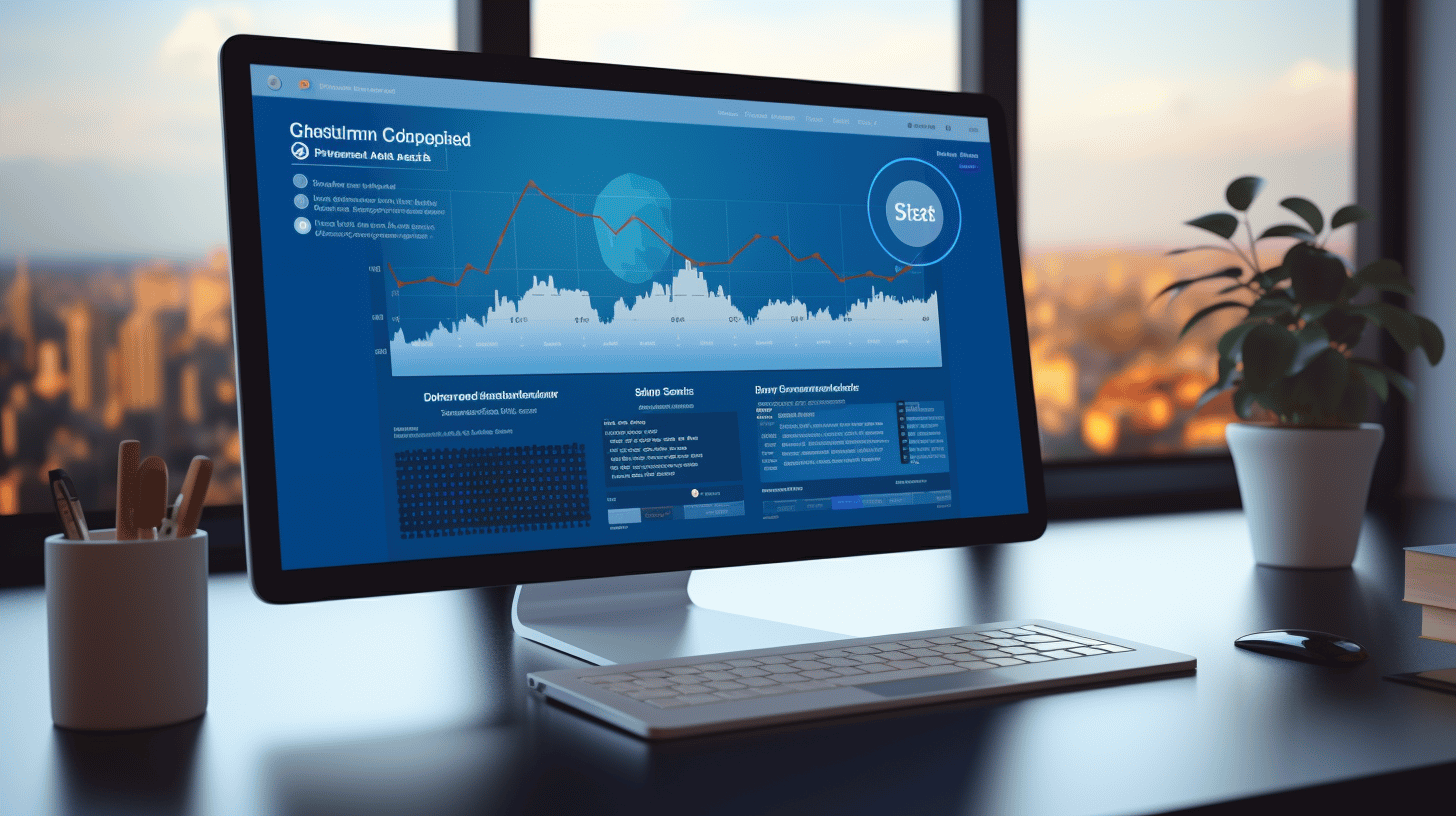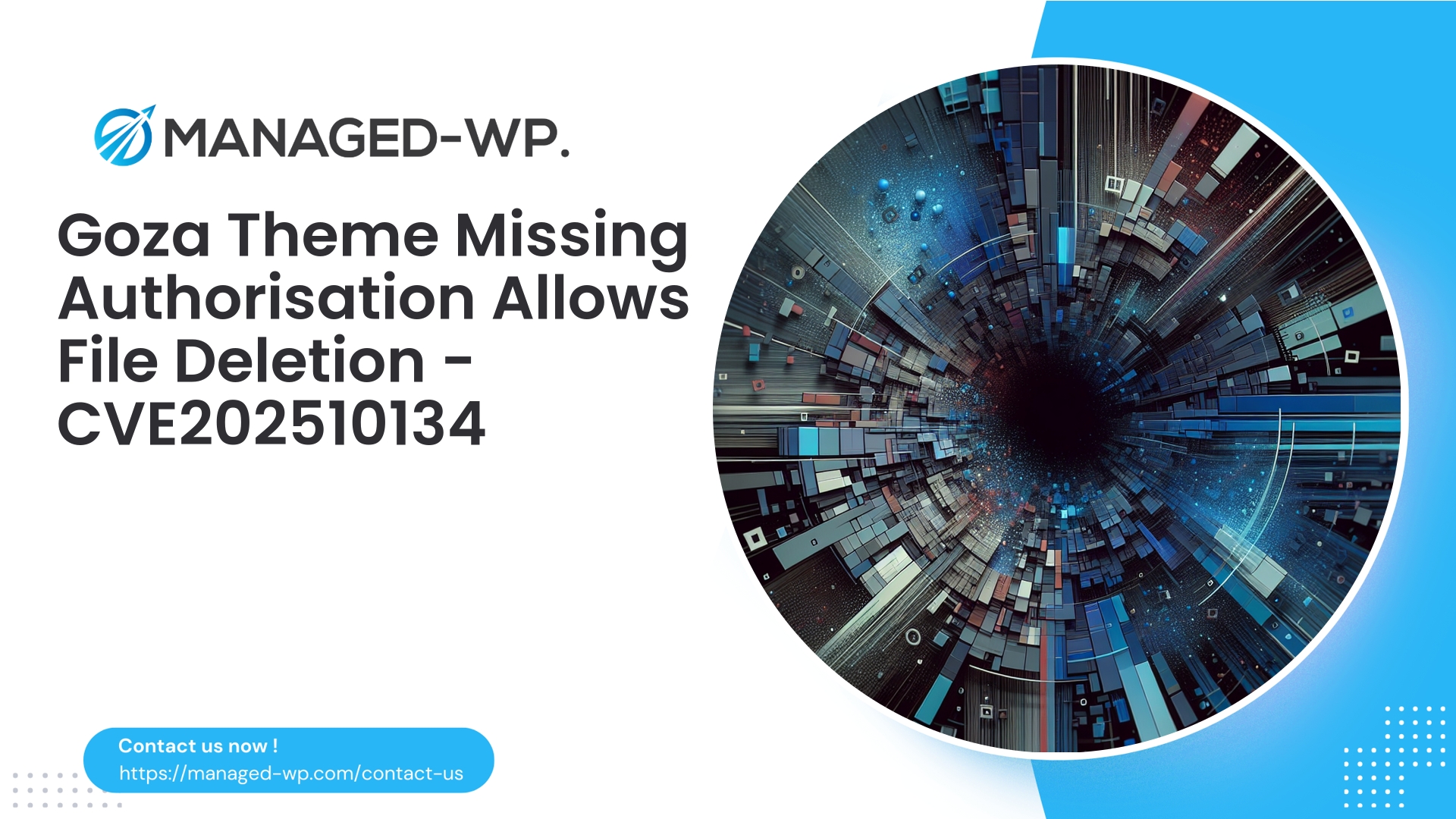| 插件名稱 | 戈札 |
|---|---|
| 漏洞類型 | 未經認證的任意文件上傳 |
| CVE編號 | CVE-2025-5394 |
| 緊急 | 高的 |
| CVE 發布日期 | 2025-09-08 |
| 來源網址 | CVE-2025-5394 |
關鍵安全警訊:Goza 主題(≤ 3.2.2)有任意檔案上傳漏洞及因應措施
概括: Managed-WP 的安全專家發現 Goza WordPress 主題 3.2.2 及更早版本存在一個嚴重的任意檔案上傳漏洞 (CVE-2025-5394)。本文將全面概述漏洞的威脅、技術原因、偵測策略、緩解措施,以及 Managed-WP 的安全解決方案如何保護您的網站——無論您是需要立即進行修補程式還是需要更緊急的虛擬防護。
作者: 託管 WordPress 安全團隊
發布日期: 2025-09-08
概述
Goza WordPress主題3.2.2及更早版本中存在一個高風險的任意檔案上傳漏洞(CVE-2025-5394)。此漏洞源自於主題外掛安裝處理程序中缺少授權檢查,允許未經驗證的攻擊者上傳任意文件,包括潛在的惡意可執行程式碼。這為遠端命令執行和網站完全控制打開了方便之門。
由於此漏洞的嚴重性和可利用性,必須立即予以關注。 Managed-WP 專家強烈建議採取緊急行動。
本次簡報將涵蓋以下內容:
- 該漏洞的技術原理(不洩漏利用程式碼):
- 需要注意的入侵指標(IoCs):
- 短期控制與長期治理
- Managed-WP託管防火牆在即時防禦中的作用
- 針對疑似違規事件的緊急應變指南。
仔細遵循逐步建議:優先進行修補,但如果無法立即更新,則應用虛擬修補和緩解措施。
漏洞概要
- Goza 主題(≤ 3.2.2)在外掛程式安裝端點缺少功能驗證,允許未經身份驗證的上傳。
- 攻擊者可以直接將檔案上傳到您的 WordPress 環境,通常是上傳到可透過網路存取的資料夾。
- 然後,像 PHP webshell 這樣的可執行有效載荷可以遠端執行,從而實現完全入侵——資料竊取、惡意注入、持久化和權限提升。
- 已修復的版本 Goza 3.2.3 可用,必須優先應用。
為什麼任意文件上傳會帶來極大的風險
任意檔案上傳漏洞是 WordPress 生態系統中最危險的漏洞之一,因為它們允許攻擊者執行惡意伺服器端程式碼。實際後果包括:
- 即時安裝具有遠端命令功能的後門(webshell),
- 資料竊取和敏感資源外洩
- 注入惡意SEO垃圾郵件或重定向腳本,
- 在託管環境中橫向移動以攻擊其他站點,
- 持續存在的存取權限,能夠規避常規的清理工作。
由於無需任何身份驗證即可利用此漏洞,因此任何運行存在漏洞的 Goza 主題的公共網站都將成為直接攻擊目標。
技術說明(摘要)
從技術層面來說,這個問題源自於主題中一個安全措施不當的上傳處理程序,該程序在未驗證使用者權限的情況下接受插件安裝檔。
- 存在漏洞的處理程序(很可能是 AJAX 或 REST 端點)接受了多部分檔案上傳,而沒有驗證請求是否來自已認證的管理員。
- 上傳的檔案儲存在可寫目錄中(例如,
/wp-content/uploads/或特定主題的資料夾),通常保留其原始檔案副檔名。 - 如果上傳了 PHP 文件,就可以遠端呼叫該文件,從而使攻擊者能夠執行命令並控制網站。
攻擊者的工作流程通常包括:
- 尋找運行受影響的 Goza 版本的網站,
- 發送精心建構的、帶有惡意PHP載荷的上傳請求,
- 存取並執行已上傳的檔案以取得控制權
- 部署持久化機制並提升權限。
雖然伺服器端的步驟(例如停用上傳目錄中的 PHP 執行)可以減少影響,但缺少授權從根本上破壞了 WordPress 的安全假設。
檢測策略:需要注意什麼
網站所有者和管理員必須立即調查可能的入侵跡象:
-
Web伺服器日誌
- 意外的 POST 請求
Content-Type: multipart/form-data來自未知 IP 的對主題相關端點或 admin-ajax.php 的存取。 - POST 上傳後不久,就對上傳檔案或主題目錄中的 .php 檔案發出請求。
- 針對外掛程式安裝或相關主題 URL 的存取模式。
日誌搜尋模式範例:
POST .*wp-content/themes/goza/.*POST .*wp-admin/admin-ajax.php.*pluginGET .*wp-content/uploads/.*\.php
- 意外的 POST 請求
-
檔案系統
- 偵測上傳目錄或主題資料夾中新增或修改的 PHP 檔案。
- 存在可疑的 ZIP 檔案或未經授權的提取。
-
WordPress審計追蹤
- 意外的管理員使用者建立或角色變更。
- 未經管理員批准的新插件安裝或檔案修改日誌。
-
可疑的出站網路流量
- 您的伺服器與未知或可疑的外部 IP 位址建立連線。
-
惡意軟體掃描器警報
- 偵測內容目錄中的 webshell 簽章或可疑程式碼模式(eval()、base64_decode()、system() 等)。
-
入侵指標(IoC)
- 文件名稱隨機或經過特殊混淆處理。
- 定時任務或排程任務觸發未經授權的腳本。
立即回應清單
如果懷疑有入侵行為,請果斷採取行動:
-
遏制
- 暫時將網站下線,或透過主機或防火牆限制公共存取。
- 停用或移除 Goza 主題-如果管理員存取權限被阻止,請透過 SFTP/FTP 重新命名主題目錄。
-
證據保存
- 儲存安全日誌並建立檔案系統快照,以便進行取證調查。
- 記錄事件時間軸。
-
資格輪換
- 使用安全設備更改所有敏感密碼和 API 金鑰。
-
掃描與清理
- 部署多個惡意軟體掃描器來識別和隔離入侵來源。
- 如有已驗證的乾淨備份,請從中還原。
-
修補和硬化
- 將 Goza 主題升級到 3.2.3 版本或卸載它。
- 在恢復服務前,請採取額外的加固措施。
-
尋求專業人士的協助
- 對於複雜的安全漏洞,請諮詢專業的 WordPress 安全團隊。
如果無法立即更新,則可採取短期保護措施
-
阻止易受攻擊的端點
- 建立 Web 伺服器或 WAF 規則,阻止向主題上傳/安裝端點發出 POST 請求。
- 備用方案:阻止或拒絕向 PHP 檔案內部發送 POST 請求
/wp-content/themes/goza/.
-
禁用上傳過程中的 PHP 執行
- 應用 .htaccess 或伺服器規則來阻止執行 PHP 文件
/wp-content/uploads/.
否認一切對於 Nginx,請使用
地點阻止 PHP 存取上傳目錄。 - 應用 .htaccess 或伺服器規則來阻止執行 PHP 文件
-
限制管理員存取權限
- 將 IP 位址加入白名單
/wp-admin/和/wp-login.php使用權。 - 為所有管理員帳戶啟用雙重認證。
- 將 IP 位址加入白名單
-
暫時禁用檔案修改
- 添加
定義('DISALLOW_FILE_MODS', true);到wp-config.php暫時阻止外掛程式/主題的安裝和更新。
筆記: 這會影響所有管理員,應謹慎使用。
- 添加
-
加強檔案權限
- 限制主題目錄的寫入權限,僅在受控更新期間授予寫入權限。
-
部署託管 WAF / 虛擬補丁
- 應用WAF規則阻止可疑的多部分POST請求和對易受攻擊端點的存取。
長期安全最佳實踐
- 定期更新 WordPress 核心、主題和插件,並在測試環境中進行測試。
- 移除所有未使用的主題和插件,以減少攻擊面。
- 實施基於角色的存取控制並限制管理員數量。
- 對特權帳戶使用強密碼和強制雙重認證。
- 採用具備虛擬修補功能的託管式Web應用防火牆(WAF)。
- 定期進行異地和離線備份。
- 對文件所有權和資料庫憑證應用最小權限原則。
- 持續監控日誌,並對可疑活動發出警報。
- 審核第三方代碼的安全狀況和更新回應能力。
Managed-WP 如何保護您的網站
在 Managed-WP,我們了解 WordPress 的動態環境——漏洞不斷湧現,因此立即採取防禦措施至關重要。
我們的服務包括:
-
具有虛擬修補程式功能的託管 Web 應用程式防火牆 (WAF)
- 即時阻止已知的任意文件上傳模式、可疑的 POST 請求以及對易受攻擊的插件或主題端點的存取嘗試。
- 一旦發現新的漏洞,立即在全網範圍內快速部署虛擬補丁,防止漏洞被廣泛利用。
-
持續惡意軟體掃描和回應
- 自動掃描 webshell 和後門,更高層級支援自動清理和引導式修復。
-
針對 OWASP 十大威脅的防護
- 針對 WordPress 網站面臨的實際威脅載體量身打造的保護措施,包括注入和檔案上傳漏洞。
-
警報和監控儀表板
- 偵測到攻擊企圖或可疑活動後立即發出通知,以便有時間做出反應。
-
支持遏制和事件補救
- 更高層級的方案包括專家指導、虛擬修補和復原支援。
我們的防禦措施最大限度地減少了誤報,同時積極阻止了因授權漏洞缺失而觸發的攻擊序列。
分步行行動計劃
-
存貨
- 找出所有運行 Goza 主題和文件版本的 WordPress 安裝。
-
修補
- 立即將所有 Goza 主題實例更新至 3.2.3 版本。
-
採取緩解措施
- 使用WAF或Web伺服器規則阻止易受攻擊的端點。
- 停用上傳過程中的 PHP 執行。
- (可選)
禁止文件修改暫時地。 - 限制管理員存取權限至受信任的 IP 位址,並啟用雙重認證。
-
掃描
- 對伺服器進行全面掃描,尋找 webshell 和可疑檔案。
- 檢查日誌中是否存在可疑的多部分 POST 請求和檔案存取 GET 請求。
-
輪換憑證
- 重置所有存在風險網站的管理員、資料庫和 API 憑證。
-
恢復
- 如果確認系統遭到入侵,請從可信任的乾淨備份中恢復,並在上線前加強系統加固。
-
監視器
- 修復後至少幾週內,應保持有效的 WAF 保護和監測。
事件回應工作流程
發現 → 遏制 → 根除 → 恢復 → 事後審查
- 探測: 收集日誌、檔案系統快照和檔案完整性基準。
- 包含: 隔離受損環境-使用維護模式和憑證撤銷。
- 根除: 移除惡意檔案並安裝乾淨的元件。
- 恢復: 恢復已驗證的乾淨備份,並套用修補程式和安全加固措施。
- 學習: 更新您的修補程式管理策略並考慮漏洞揭露政策。
開發者和主機託管商
- 始終強制執行伺服器端功能檢查,例如
current_user_can('install_plugins')—永遠不要相信客戶端驗證。 - 對處理檔案上傳的 AJAX 和 REST API 端點實作 nonce 和能力檢查。
- 在處理 ZIP 上傳檔案之前,請對文件類型進行嚴格的白名單審核和驗證。
- 將上傳檔案儲存在網站根目錄之外,或確保嚴格的執行保護。
- 主機應該隔離帳戶,掃描檔案系統,並預設阻止所有已上傳的 PHP 程式碼的執行。
管理員日誌搜尋範例
快速使用命令列工具偵測可疑活動(請根據您的環境調整路徑):
- 尋找與 Goza 主題相關的貼文:
grep -Ei "POST .*wp-content/themes/goza" /var/log/nginx/access.log* - 尋找發送到 admin-ajax.php 的多部分 POST 請求:
grep -Ei "POST .*admin-ajax\.php" /var/log/apache2/access.log* | grep“多部分/表單資料” - 尋找最近上傳的 PHP 檔案:
尋找 /var/www/html/wp-content/uploads -type f -iname "*.php" -mtime -30
使用 Managed-WP 免費方案保護您的網站
開始使用 Managed-WP Essential Protection
需要立即獲得便利的保護,同時還能快速修復網站漏洞?不妨從 Managed-WP 免費套餐開始。它提供強大的防火牆保護、針對最常見漏洞的 Web 應用防火牆 (WAF)、惡意軟體掃描以及符合 OWASP Top 10 風險標準的防護措施。快速激活,即時阻止攻擊。立即註冊: https://my.managed-wp.com/buy/managed-wp-free-plan/
如需更深入的防禦(包括自動清除惡意軟體、詳細報告和專家修復支援),請考慮升級至 Managed-WP 控制面板中的標準版或專業版計畫。
常見問題 (FAQ)
問: 如果我運行的是 Goza 主題,但從不使用外掛安裝功能,這樣安全嗎?
一個: 很遺憾,並非如此。漏洞存在於主題處理某些端點上傳檔案的方式中,即使您未主動使用,這些端點也可能被存取。請將所有受影響的版本視為存在漏洞。
問: 我可以透過停用 Goza 主題來保護我的網站嗎?
一個: 是的,切換到其他主題或刪除存在漏洞的主題目錄可以消除風險。如果管理員區域存取權限被阻止,請透過 FTP 或 SFTP 刪除或重新命名 Goza 主題資料夾。
問: Web應用程式防火牆能否攔截這些攻擊?
一個: 維護良好的WAF,配合最新的規則和虛擬補丁,可以有效阻止攻擊嘗試。選擇WAF時,應考慮其快速的特徵碼更新和行為偵測功能。
優先建議
- 請立即將 Goza 主題更新至 3.2.3 版本——這是最終的解決方案。
- 如果現在無法更新,請部署補償控制措施:阻止端點、停用上傳中的 PHP 執行、限制管理員存取權限。
- 掃描是否有惡意 Web Shell 和可疑的 PHP 檔案。保留所有日誌。
- 重設所有密碼並為管理員啟用雙重認證。
- 透過嚴格的權限控制來強化環境,刪除未使用的程式碼,並維護備份。
- 使用具有虛擬修補程式功能的託管式 WAF 來防止大規模攻擊。
最後的想法
這個 Goza 主題漏洞暴露了單一授權檢查缺失如何導致整個網站被攻破。此類問題會破壞 WordPress 的核心安全模型,需要立即修復。請盡快修補,但務必假設攻擊者會在漏洞揭露後迅速進行大規模掃描並利用漏洞。
透過部署託管防火牆、持續掃描以及採取備份、最小權限原則和多因素身份驗證等最佳操作實踐,建立多層防禦體系,以降低風險和損害範圍。
如果您在環境評估、部署緊急防護措施或進行事故後清理方面需要協助,Managed-WP 可提供針對應變各階段的專家服務。立即取得我們的免費防護方案: https://my.managed-wp.com/buy/managed-wp-free-plan/
保持警惕,並優先更新 WordPress 網站上的所有重要安全性修補程式。











